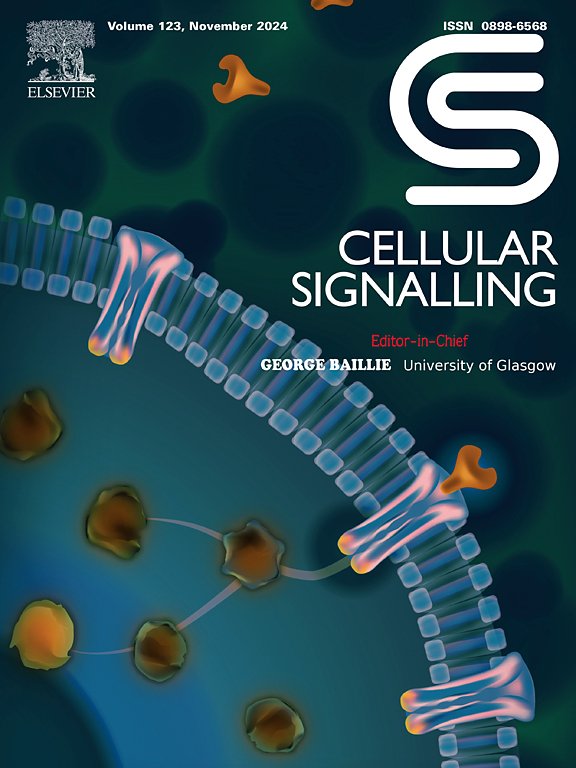Adaptor protein complex 1 facilitates ciliary localization of serotonin receptor type 6
IF 3.7
2区 生物学
Q2 CELL BIOLOGY
引用次数: 0
Abstract
The primary cilium, an immotile protrusion of vertebrate cells, detects chemical and mechanical stimuli in the extracellular milieu and transduces them into the cell body, thereby contributing to cellular development and homeostasis. In the mammalian brain, serotonin receptor type 6 (Htr6) and other specific G protein-coupled receptors (GPCRs) localize preferentially to primary cilia and function in ciliary chemical detection; however, the molecular mechanism by which a subset of GPCRs is transported to primary cilia has not been fully elucidated. In the present study, we demonstrate that a region in the fourth intracellular domain of Htr6 (Htr6 i4) is sufficient for ciliary localization. In yeast, the interaction of this region with the C-terminal region of γ1-Adaptin, a subunit of adaptor protein complex 1 (AP-1), was identified. The interaction between Htr6 and γ1-Adaptin was confirmed by immunoprecipitation analysis using HEK293T cells. The preference for ciliary localization of Htr6 and Htr6 i4 was significantly decreased by ablation of γ1-Adaptin in hTERT RPE-1 cells, which was rescued by exogenous expression of γ1-Adaptin. Furthermore, Htr6 and Htr6 i4 showed reduced localization to primary cilia in γ1-Adaptin-depleted cultured hippocampal neurons compared with control neurons. These results indicate that the ciliary localization of Htr6 is facilitated by AP-1-mediated membrane trafficking.

接头蛋白复合物1促进6型血清素受体的纤毛定位。
初级纤毛是脊椎动物细胞的一种不动的突出物,检测细胞外环境中的化学和机械刺激,并将其转导到细胞体中,从而促进细胞发育和体内平衡。在哺乳动物大脑中,血清素受体6型(Htr6)和其他特异性G蛋白偶联受体(gpcr)优先定位于初级纤毛,并在纤毛化学检测中发挥作用;然而,GPCRs亚群转运到初级纤毛的分子机制尚未完全阐明。在本研究中,我们证明了Htr6的第四个胞内结构域(Htr6 i4)的一个区域足以实现纤毛定位。在酵母中,该区域与适配蛋白复合物1 (AP-1)的亚基γ -1 - adaptin的c端区相互作用。利用HEK293T细胞进行免疫沉淀分析,证实了Htr6与γ - 1- adaptin之间的相互作用。在hTERT RPE-1细胞中,γ -1 - adaptin的消融显著降低了Htr6和Htr6 i4对纤毛定位的偏好,并通过外源性γ -1 - adaptin的表达恢复了Htr6和Htr6 i4的定位。此外,与对照神经元相比,Htr6和Htr6 i4在γ - 1- adaptin缺失的培养海马神经元中显示出在初级纤毛上的定位减少。这些结果表明,ap -1介导的膜运输促进了Htr6的睫状定位。
本文章由计算机程序翻译,如有差异,请以英文原文为准。
求助全文
约1分钟内获得全文
求助全文
来源期刊

Cellular signalling
生物-细胞生物学
CiteScore
8.40
自引率
0.00%
发文量
250
审稿时长
27 days
期刊介绍:
Cellular Signalling publishes original research describing fundamental and clinical findings on the mechanisms, actions and structural components of cellular signalling systems in vitro and in vivo.
Cellular Signalling aims at full length research papers defining signalling systems ranging from microorganisms to cells, tissues and higher organisms.
 求助内容:
求助内容: 应助结果提醒方式:
应助结果提醒方式:


